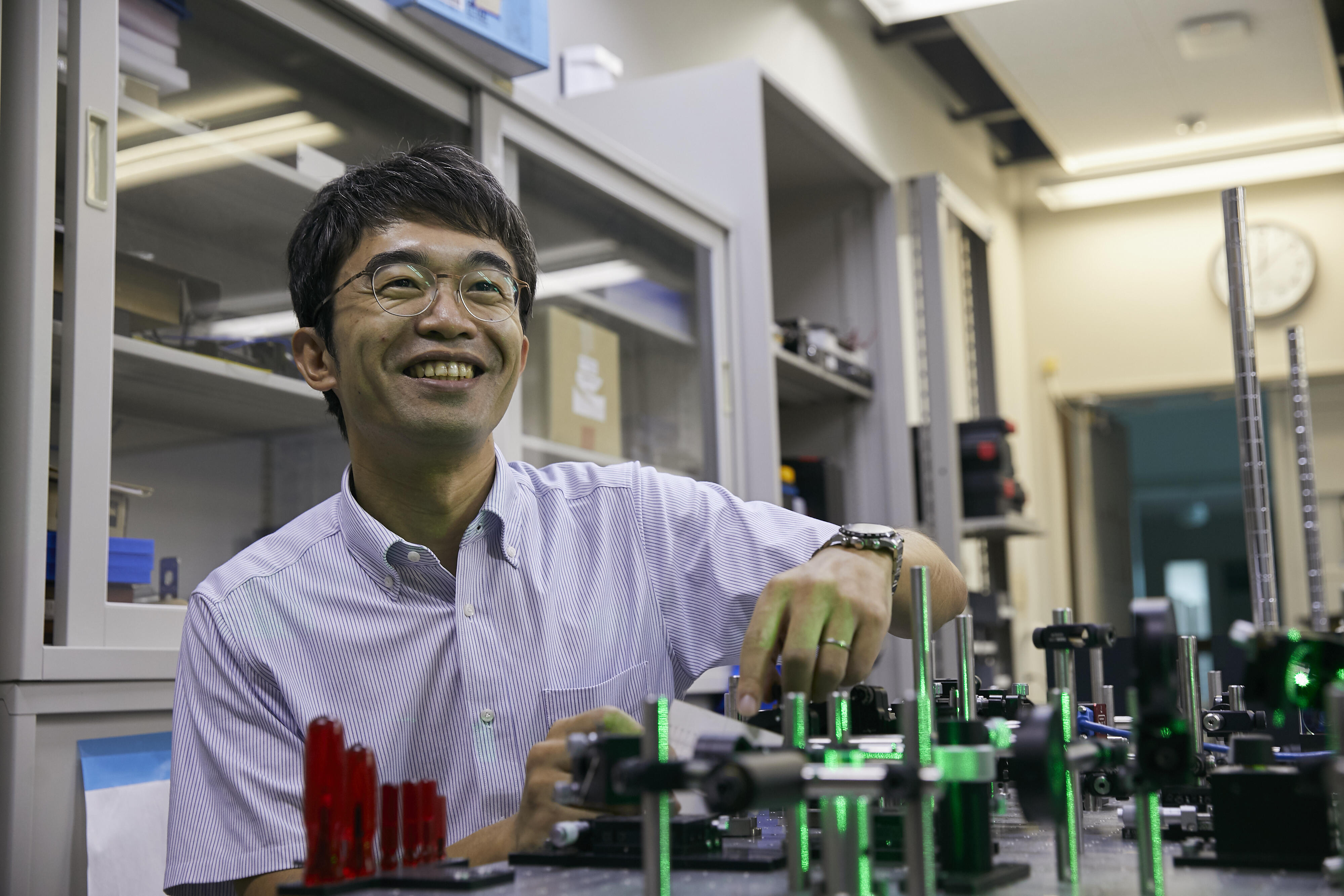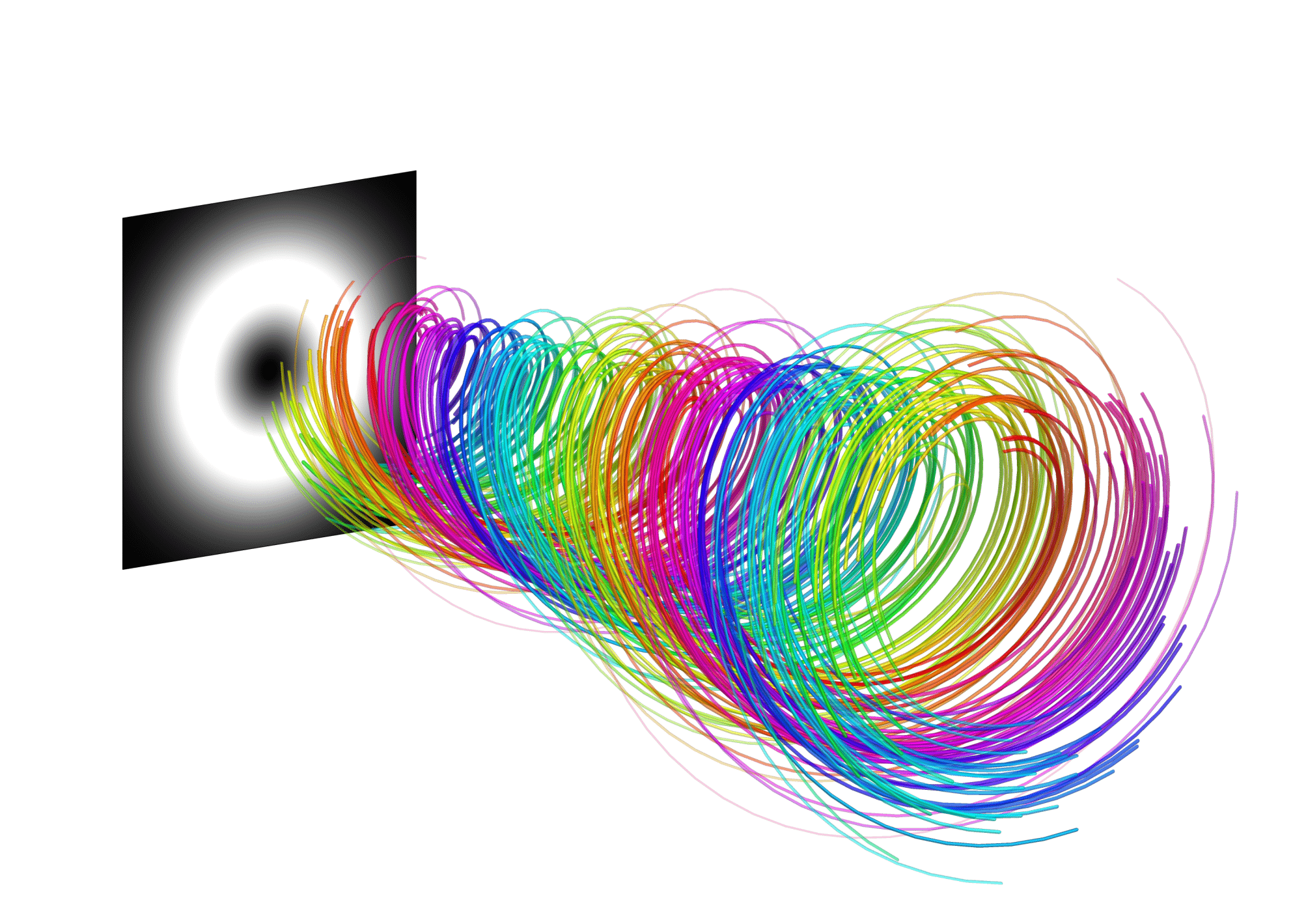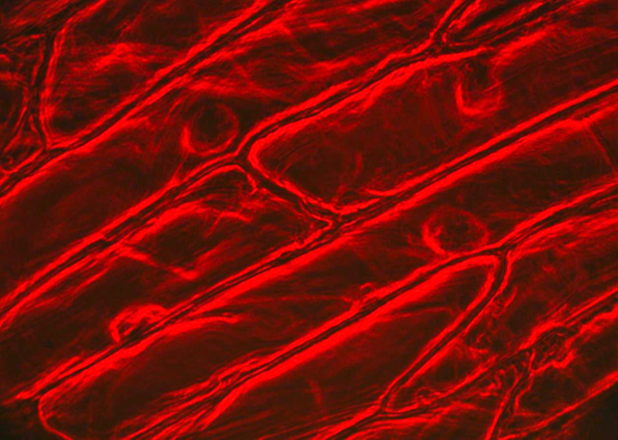- TOP
- Cutting-edge Research and Social Contribution
- Cutting-edge Research
- Breaking new ground in future technology with optical vortices

Breaking new ground in future technology with optical vortices

KOBAYASHI Hirokazu
- Specialized field
Optical Metrology, Quantum Optics, Wavefront Control, Optical Fiber Sensing, Nonlinear Optics
- Twisting, bending, wiggling, bundling...
How far can we change the world by "manipulating" light?
This question is the challenge taken up by Professor Hirokazu KOBAYASHI of the School of Systems Engineering.
Professor Kobayashi works with "optical vortices," a special form of light with a helical structure.
By controlling this seemingly mysterious light as he wishes, he makes the invisible visible, transmits information instantaneously, and even accesses the quantum world.
The power to manipulate light is opening doors to the future of communication, sensing, medical, and quantum technologies.
What is twisted light with a dark hole in the center?
Doughnut-shaped light with a dark hole in its center that propagates along a helical path... This is a special form of light called an "optical vortex." By designing the light so that its propagation speed varies slightly from point to point, light that would normally travel in a straight line becomes twisted, resulting in this distinctive shape.
Professor Hirokazu Kobayashi is conducting cutting-edge research on the manipulation of optical vortices with the aim of linking them to future technologies. What inspired Professor Kobayashi, who was obsessed with electronic circuits and programming during his high school years, to venture into the world of light?
"Unlike electronic circuits, we can't build or control light itself with our hands. But with computers and electronic technology, we can manipulate light exactly the way we want. That's what I found fascinating."

In advanced fields such as communication, sensing, medical, and quantum technology, light is an indispensable element. Professor Kobayashi's journey began with a simple curiosity: "I just want to create a slightly unusual kind of light." That interest has grown into wide-ranging research related to optical vortices.
The future of medical and communication fields opened by helical light
Helical structure is the most important characteristic of optical vortices and this unique structure is opening the door to various fields of application. "Things that are impossible with ordinary light become possible with this twisted light. That's what makes it so fascinating," he says with enthusiasm.
One example is STED microscopy, which enables nanoscale observation of matter. By taking advantage of the dark center of the optical vortex, it can reveal fine structures with greater clarity than conventional light allows. This technology is attracting growing attention in the medical and biological fields for applications such as cancer cell diagnosis and nerve cell observation.
Professor Kobayashi and his team have developed an original technique (see figure below) that uses optical vortices to make the edges of cell nuclei appear more sharply than conventional methods. Because it can visualize even transparent structures by enhancing contrast only at their edges, it makes a significant contribution to improving the precision of microscopic observation.
The potential of optical vortices extends beyond their "power to see." Light is inherently well-suited for high-speed communications, and at present, information is primarily multiplexed by differences in the color of light. By adding shape--that is, optical vortices--it becomes possible to dramatically increase the amount of information transmitted simultaneously.
Furthermore, information density can be increased even further by multiplexing vortices with different helical paths on a single color of light. Professor Kobayashi and his team have developed a new method that enables them to flexibly control the helical structure of optical vortices, in single, double, or triple form. "With this technology, high-capacity communications 10 or even 100 times greater than ever before may no longer be just a dream," he says with growing excitement.

Controlling even liquid crystals to quantum phenomena with optical vortices
Optical vortices can also set objects in motion. In collaboration with the Bordeaux University in France, Professor Kobayashi succeeded in controlling the alignment of liquid crystal molecules by exploiting the unique properties of optical vortices. Through both experimental and theoretical approaches, they elucidated the mechanisms by which liquid crystal molecules twist, rotate, and align in response to optical vortex parameters such as rotational speed and direction. This optical manipulation of liquid crystals could pave the way for next-generation light-driven devices, as well as biomedical sensing technologies that detect changes in liquid crystals optically.
Optical vortices also demonstrate remarkable potential in "optical tweezer" technology, which uses the subtle pressure of light to trap and move microscopic particles without physical contact. This enables more sophisticated manipulation beyond simple translational motion, including particle rotation.
"We've found that the more complex we make the vortex--through doubling or tripling--the stronger the rotational force becomes. The technology we developed for controlling the structure of optical vortices should prove valuable in this area as well."
This "power to manipulate" that optical vortices possess extends into the quantum realm. In the field of quantum optics, where Professor Kobayashi is now focusing his efforts, manipulating individual photons can create new mechanisms for communication and computation. "This is research I've long wanted to pursue, and now everything is in place, and I'm working on it with my students," he says with a smile.
Quantum cryptography is already partially in practical use, but when it comes to "quantum light with vortices," there remains a lot of unknown territory, he says.
"Optical vortices can exhibit complex and unique behaviors that ordinary light cannot achieve. If we can harness those properties effectively, it will lead to more advanced computation and highly secure communications."

From Unsung Hero to Future Star
The world of optical vortices holds diverse possibilities for application. Even when we simply say "manipulating" light, behind that lies a steady cumulative process through repeated trial and error. When we visited Professor Kobayashi's laboratory, precision optical components and devices were packed into every available space, with complex maze-like equipment spread across the experimental benches.
Through numerous steps in this process, the optical vortex image finally takes shape. At that moment, he says, a feeling of deep satisfaction wells up inside.
"Something you've built with tremendous effort finally appears in visible form. That moment is more gratifying than anything."
While his research covers a wide range of themes, underlying them all is a commitment to "drawing out the full potential of light's degrees of freedom."
"Light is a phenomenon with many diverse faces. It can be freely controlled in terms of wavelength, color, intensity, polarization, and even the degree of its twist. By combining these properties, we can create functions and value that no one has yet seen. Light already works as an unsung hero in every aspect of our lives, but I believe my role is to continue exploiting technologies that draw out light's potential and thereby create new forms of light that will serve the next generation."
Looking toward the future, he concluded:
"Light technology is becoming a fundamental element on par with electricity. Before long, an era may come when all electrical circuits are replaced with optical ones." The possibilities of light are now entering a new stage. As part of that journey, Professor Kobayashi continues exploring a path that, together with light, will brightly illuminate the future.
Date of posting: November, 2025/ Date of interview: July, 2025
- PREVIOUS
- NEXT
